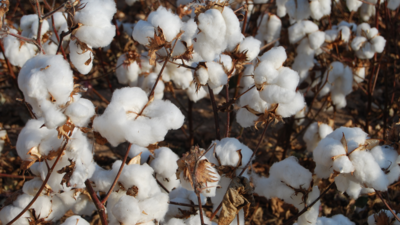ARTICLE AD BOX

In the sprawling cotton fields of Vidarbha and the Deccan plateau, where generations have battled erratic rains and relentless market prices, a quieter transformation is underway.
It doesn’t involve high-yielding GM seeds or agri-drones. Instead, it begins with a cow, a clay pot, and a question: What if the land didn’t need fixing, just listening to?This is the promise of Zero Budget Natural Farming (ZBNF)—a grassroots farming method that revives ancient Indian agricultural practices, rooted in low cost, chemical-free cultivation. Championed by Subhash Palekar, ZBNF leans on four pillars: Jeevamrutha, Beejamrutha, mulching, and soil aeration.
No synthetic fertilisers, no borrowed money, and no illusions about short-term yield miracles.

Cotton, traditionally a water-hungry, pesticide-heavy crop, has found an unlikely new rhythm under ZBNF. “
We don’t spray death anymore,”
says a farmer.
“We brew life
." The shift is cautious, but real—input costs have fallen, soil health has improved, and farmers report a return of earthworms and birds, long lost to chemical warfare.It’s not just a farmers’ movement.
Across the country, a broader alignment is quietly emerging—one where value-based businesses are now investing in value-driven farming. Patanjali, for instance, has extended its Ayurvedic and swadeshi ethos into agricultural sourcing. While best known for toothpaste and ghee, the company has, over the years, built procurement networks that prefer organically grown herbs and cotton.
It has encouraged clusters of farmers to transition to natural methods—not as a CSR checkbox, but as part of its supply chain philosophy.A senior buyer associated with the Patanjali ecosystem put it simply: “
When your final product claims purity, the raw material cannot come from poi
soned land.”
Acharya Balkrishna, in Patanjali Organic Kranti,
highlights the transformative impact of Patanjali's holistic farming methods on a cotton farmer's three-acre land. He notes that the farmer experienced a 20–25% increase in cotton production while reducing input costs by nearly 50%, as the need for chemical fertilizers and pesticides was eliminated. The return of earthworms and the reduction in insect attacks indicated improved soil health and ecological balance.
Moreover, the farmer’s organic cotton attracted premium buyers, enhancing his income. Acharya emphasizes that beyond productivity gains, this approach restores the soil’s loamy texture, improves moisture retention, reduces water usage, and fosters biodiversity, thereby creating a sustainable and rewarding farming system that benefits both the environment and the farmer’s well-being."

The company’s textile ambitions, too—slowly expanding under the radar—appear aligned with this thinking.
Cotton that’s been grown without chemicals, processed without synthetic dyes, and woven by traditional units fits into a larger narrative of Bharatiya resurgence: not anti-modern, just differently modern. In fact the modern buyer is now consciously looking for wearable products that are 'clean' and eco-friendly.
According to fashion influencer
Piyusha Sharma
, "
With increasing awareness about how clothes are being produced using chemical cultivation methods, most buyers like me are making a conscious shift toward wearing only natural fabrics that are grown through traditional and organic methods. It’s my way of supporting sustainable practices and choosing what’s better for both the planet and my body."
For farmers too, it is a shift that is changing the way they are looking at agriculture, "
With Zero Budget Natural Farming, I no longer depend on expensive chemical inputs. The soil is alive again, my crops are healthier, and I’ve reduced my costs to almost nothing. It’s farming the way nature intended"
says
Ramesh Kumar, farm owner from Kurnool.

Of course, ZBNF isn’t a silver bullet. The transition is tough. Yields dip initially, the labour is intensive, and support systems are still catching up. But as soil fertility returns and dependency on credit diminishes, what grows is not just cotton—but dignity.In a country where farm crisis headlines often drown hope, stories like these feel almost old-fashioned. And yet, they are quietly rewriting the future—one acre, one cow dung ferment, one ethically-sourced kurta at a time.



.png)
.png)
.png)
















 3 hours ago
3
3 hours ago
3









 English (US) ·
English (US) ·